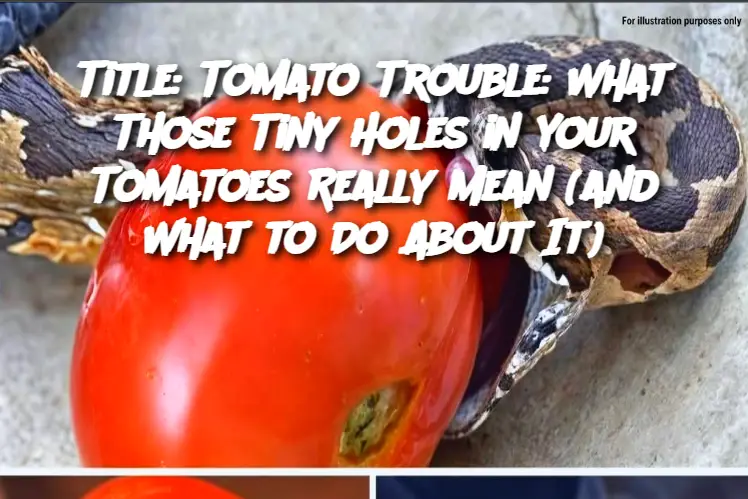-
Tomatoes with visible holes or punctures
-
Insect activity (e.g. tomato fruitworms, hornworms, stink bugs)
-
Environmental stress (e.g. cracking from overwatering)
-
Fungal or bacterial infections (in some cases)
-
Garden conditions (moisture, pests, plant health)
Preparation (Identifying the Cause):
1. Examine the Hole’s Appearance:
-
Small, neat pinholes: Often a sign of stink bug or fruitworm feeding.
-
Jagged or large openings: May be caused by tomato hornworms or birds.
-
Tiny clusters of holes: Could indicate flea beetles.
-
Holes near cracks or splits: Often caused by sudden watering after dry spells.
2. Look Inside the Tomato:
-
Cut open affected tomatoes to inspect for internal damage.
-
If the flesh is discolored, mushy, or contains bugs or larvae—it’s best discarded.
-
If the inside looks healthy and untouched, you may be able to cut around the hole and safely use the rest.
Serving and Storage Tips (What to Do Next):
-
Do Not Store Damaged Tomatoes: They spoil faster and can spread mold.
-
Use Immediately if Salvageable: If there’s minimal damage and no pests inside, use the tomato in a cooked dish (like sauce or stew).
-
Compost If in Doubt: If it looks or smells off—when in doubt, throw it out (or compost it).
-
Inspect Nearby Tomatoes: If you grew them, check others on the plant for similar signs of damage.
Variants (Other Causes of Tomato Holes):
-
Bird Pecking: Birds may peck holes to get moisture—try hanging reflective tape or using bird netting.
-
Cracking from Water Stress: Uneven watering can cause splits that resemble holes—mulch and consistent watering help.
-
Fungal Infections: Some diseases like anthracnose start with tiny holes and spread—remove affected fruits and rotate crops yearly.
-
Slug or Snail Damage: Look for slime trails and irregular holes—try copper barriers or diatomaceous earth.
FAQ:
Q: Are tomatoes with holes safe to eat?
A: If the damage is minor and there’s no sign of rot or bugs inside, yes—but always cut open and inspect first.
Q: What insect causes tiny holes in tomatoes?
A: Common culprits include fruitworms, stink bugs, and tomato hornworms.
Q: Can I prevent this in my garden?
A: Yes! Use row covers, encourage beneficial insects, inspect regularly, and rotate crops. Neem oil and insecticidal soap also help deter pests.
Q: Do holes mean the tomato is diseased?
A: Not always. Holes are more often due to pests, but can sometimes indicate underlying fungal or bacterial issues if surrounded by spots or rot.
Q: Will cooking kill any potential bacteria or bugs?
A: Cooking at high temperatures can kill most pathogens, but only use the unaffected, healthy parts of the tomato.
Conclusion:
Those mysterious holes in your tomatoes don’t have to ruin your harvest or your appetite. With a little detective work and some gardening smarts, you can identify the cause, protect future crops, and even salvage the good parts of a damaged tomato. Nature isn’t always perfect—but it’s always full of surprises. Keep growing, stay curious, and remember: not all holes spell doom for your dinner
